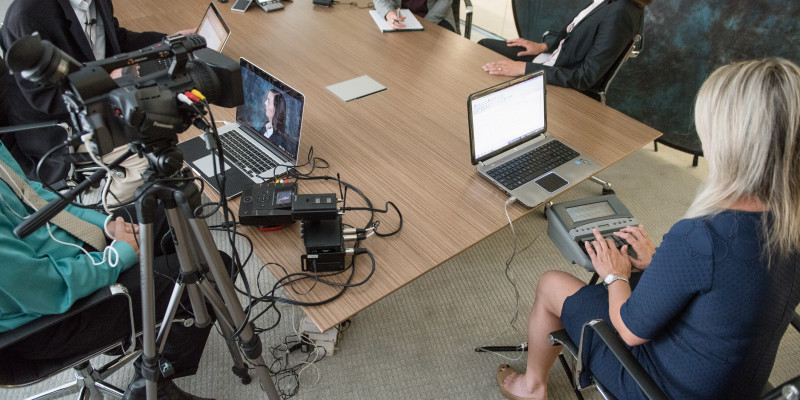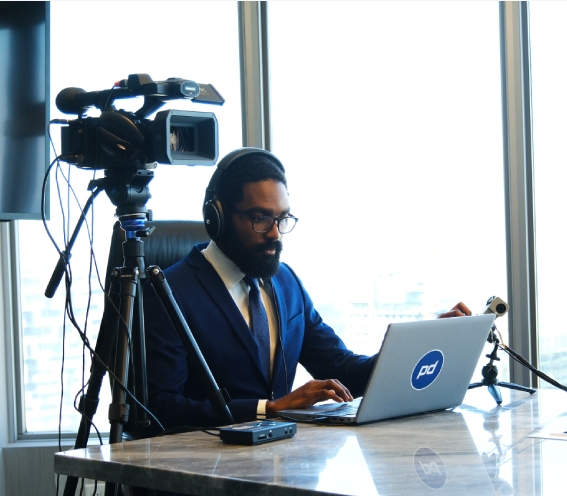Why Legal Videography Plays a Crucial Role in Modern Legal Practices
Why Legal Videography Plays a Crucial Role in Modern Legal Practices
Blog Article
Why Legal Videography Is Important for Accurate Court Recordings
The function of lawful videography in court setups can not be overemphasized, as it offers as a necessary tool for maintaining the integrity of court documents. The ramifications of integrating legal videography into common courtroom practices increase essential inquiries about its broader effect on the legal system.
Relevance of Visual Evidence
In the world of legal proceedings, the relevance of aesthetic proof can not be overemphasized. Aesthetic proof functions as an effective device in establishing realities, affirming statements, and enhancing the total quality of an instance. This sort of evidence, which includes pictures, video clips, and layouts, can supply a concrete context that verbal descriptions usually lack, thus offering courts and courts a clearer understanding of the conditions surrounding an instance.
In addition, visual proof aids in the retention of information. Human cognition is naturally visual, and people are more probable to bear in mind and comprehend information offered in an aesthetic layout. In the court room, this can be crucial, as compelling aesthetic evidence can guide viewpoints and strengthen the story offered by legal reps.
In addition, the usage of visual proof can minimize misunderstandings and obscurities that commonly occur from verbal exchanges. By supplying a straight representation of occasions, aesthetic evidence helps to get rid of subjective interpretations and promotes a much more unbiased evaluation of the truths. Subsequently, the combination of aesthetic proof into lawful procedures not only strengthens the integrity of the judicial procedure however likewise boosts the probability of achieving a simply end result.
Capturing Non-Verbal Hints
Using sophisticated videography methods can significantly improve the capture of non-verbal cues during legal proceedings. Non-verbal interaction, consisting of face expressions, body language, and eye call, plays an important duty in conveying feelings and intents that might not be explicitly mentioned in spoken testament. legal videography. Legal videography employs high-definition electronic cameras and critical angles to ensure that these subtle hints are videotaped with clarity and accuracy
The capacity to assess non-verbal actions can give important context to declarations made during court sessions. For instance, a witness's hesitation or confidence can be analyzed with their stance or motions, possibly influencing the jury's understanding of trustworthiness. Furthermore, the use of close-up shots can aid concentrate on an audio speaker's expressions, enabling an extra nuanced understanding of the testimony.
Furthermore, incorporating several video camera angles can create a thorough sight of communications, highlighting characteristics in between celebrations entailed. This diverse method not just improves the precision of the court document however additionally aids in protecting the honesty of the judicial process - legal videography. Ultimately, catching non-verbal cues with lawful videography cultivates a richer, much more full representation of courtroom process

Enhancing Statement Integrity
The integrity of statement can be considerably strengthened with making use of top notch lawful videography. Video recordings function as an objective medium that captures not just the talked words of witnesses however additionally the nuances of their shipment, including tone, pacing, and psychological expressiveness. This complex documents gives a clearer understanding of the witness's reliability and intents, which can be pivotal in legal process.
Furthermore, legal videography minimizes the capacity for misconceptions that might occur from created records alone. When jurors can observe a witness's click here for info attitude and body movement along with their testament, they are much better geared up to evaluate the credibility and reliability of the evidence offered. This aesthetic context can reinforce the testimonial narrative, making it more compelling and reputable.
Furthermore, the visibility of a video clip recording can hinder potential incongruities in testament. Witnesses may be extra mindful in their statements when they know they are being recorded, resulting in even more accurate and genuine accounts. In general, top quality legal videography enhances the stability of testament, guaranteeing that the court has accessibility to a full and honest depiction of the facts as conveyed by the witnesses.
Supporting Appeals and Reviews
Lawful videography plays a critical function in sustaining appeals and evaluations by giving a comprehensive visual document of court room proceedings. This aesthetic documents catches not only the talked words of witnesses and lawyers but likewise the subtleties of body language, intonation, and court characteristics. Such components can be critical in understanding the context of statements and debates offered.
In the appellate procedure, where the focus gets on errors of legislation and step-by-step fairness, a video record can function as a crucial tool for appellate courts. It makes it possible for judges to assess the original test context, making sure that decisions are based on a total understanding of the proceedings. The ability to visually analyze the disposition of witnesses or the communications in between celebrations can expose insights that composed records may neglect.

Furthermore, lawful videography can assist in making clear ambiguities in testaments address or procedural rulings, consequently strengthening the basis for an allure. By providing a trustworthy, unbiased account of what transpired in court, legal videography not only supports the honesty of the lawful process yet likewise encourages all events included to make enlightened choices concerning their instances.
Enhancing Court Room Procedures
Enhancing courtroom performance, lawful videography simplifies procedures by providing immediate access to aesthetic records of procedures. This technology permits judges, lawyers, and courts to revisit crucial statement and evidence, making sure that all celebrations have a clear understanding of the instance. By recording the nuances of spoken and non-verbal interaction, videography improves the document, making it simpler to comprehend the context and weight of statements.

Additionally, video clip recordings can facilitate remote engagement in hearings, enabling for higher adaptability in organizing and participation, which is especially beneficial in intricate instances involving several stakeholders.
Final Thought
In conclusion, legal videography plays an essential duty in ensuring precise court recordings by supplying essential visual proof that records both spoken and non-verbal interaction. This practice enhances the reliability of testaments, sustains appellate testimonials, and simplifies court room processes. By promoting a detailed understanding of court dynamics, lawful videography inevitably contributes to more equitable judicial end results, enhancing the integrity of the lawful system and helping with educated decision-making.
Report this page